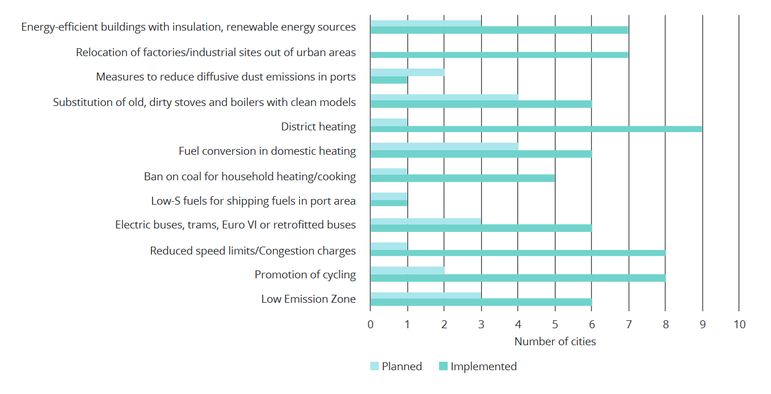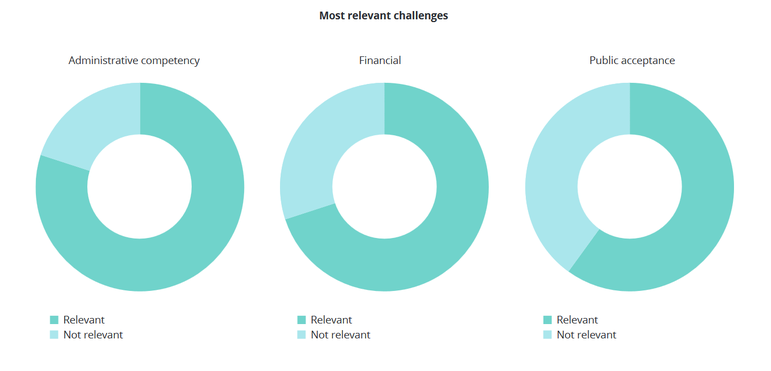Key messages
- Most abatement measures address emissions from road traffic.
- There is no one measure that fits all cities; each city has different abatement initiatives specific to city characteristics.
- Measures are proven to reduce local air pollution and improve quality of life in cities
- Cities report challenges in engaging with citizens and reaching political coherence at all governance levels.
The EEA has worked together with a number of European cities to understand better the challenge of improving urban air quality. Its findings are summarised in the EEA Report Europe’s urban air quality – re-assessing implementation challenges in cities.
It is encouraging to see that many cities are making great progress in understanding the sources of air pollution at local level. The ten cities that participated in the pilot project have implemented and planned various measures, from expanding district heating to promoting cycling, lowering speed limits issuing congestion charges and introducing low emissions transport zones.

Source: Europe's urban air quality - re-assessing implementation challenges in cities
While most abatement measures still address emissions from road traffic — mainly NOx and PM emissions — other sources of pollutants are also considered, such as fuel combustion in residential stoves, inland shipping, and construction and demolition activities, including emissions from non-road mobile machinery.
Local measures include expanding district heating, using cleaner fuels for heating, introducing low-emission transport zones, switching to cleaner buses or trams, promoting cycling, lowering speed limits and issuing congestion charges. Because of the variety of these measures and the different types of city, there is not one specific solution that fits all cities.
What is remarkable about these measures is that they both reduce local air pollution and improve the quality of life in those cities. Furthermore, they cut greenhouse gas emissions and, in many cases, save money.
Cities have also improved their air quality management, particularly their use of tools and methods to quantify the effects of proposed and implemented measures. As a result, there is an increased understanding of the sources of local air pollution and of related-health concerns.
Nonetheless, the same cities report a number of important challenges, especially in engaging with citizens and making the political case for these measures, such as highlighting the co-benefits for health, noise reduction, and climate change mitigation and adaptation. Achieving policy coherence across administrative and governance levels, as well as generating political and public support for improving air quality beyond the minimum EU standards, is challenging. Cities have highlighted the importance of a regular exchange of knowledge and experience concerning, for example, good practice and capacity building, similar to the one offered in the implementation pilots.

Source: Europe's urban air quality - re-assessing implementation challenges in cities
Cities are aware of the necessity of adopting a sustainable and integrated approach in air quality management and of closely involving their citizens in their actions. Indeed, policies and changing behaviours have been proved to translate into clear modal shifts over recent decades, with public transportation, cycling and walking generally growing as a share of mobility in comparison with private mobility. Changes in mobility choices directly translate into changes in emissions with clever sectoral policies.


Document Actions
Share with others